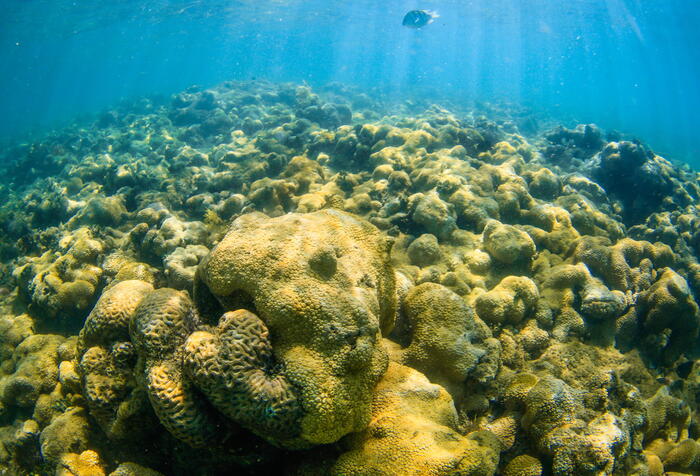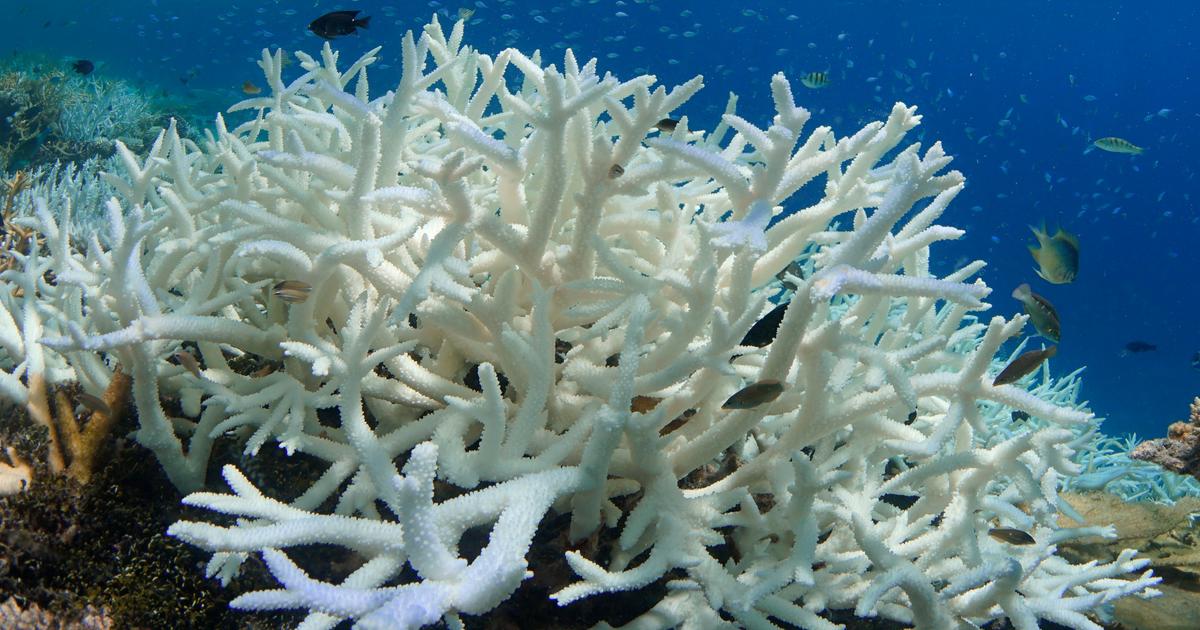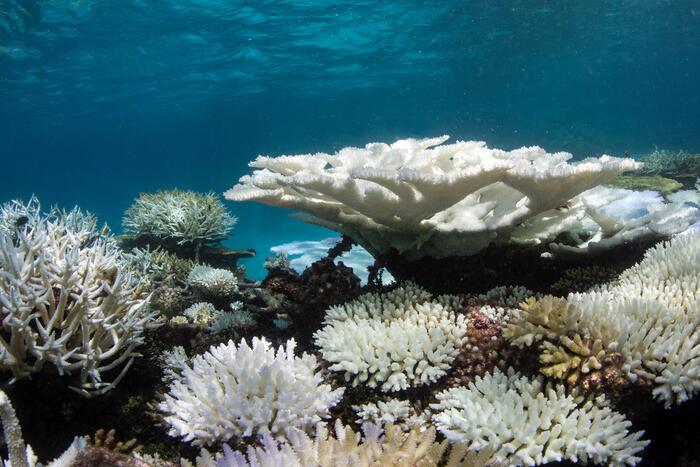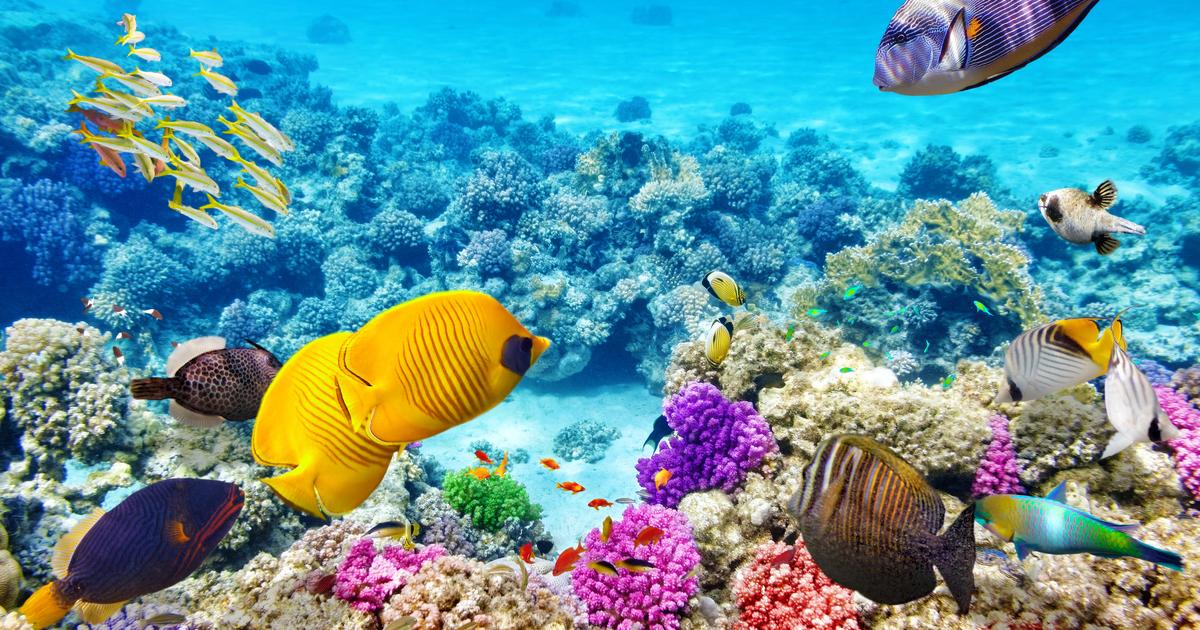The Mallorcan hotel group Iberostar has created a nursery and a coral genetics laboratory in the Dominican Republic to try to restore the Caribbean reefs.
Corals, despite their stony appearance, are animals that organize themselves in colonies.
And fortunately for these projects, they reproduce asexually, by budding.
That is, a small piece of a single individual is capable of creating clones of itself and multiplying itself.
The marine biologist Macarena Blanco collects data in one of the genetics tanks at the Coral Lab in Playa Bávaro.
paco nadal
"A coral nursery is basically a space in which artificial structures are placed where pieces of coral are placed with the objective that when they have enough tissue they are transplanted to the reef", explains Macarena Blanco, marine biologist and manager of the Coral Lab of Iberostar in Punta Cana. “If you break a piece of coral and put it somewhere else in the structure or in a different structure, over the years a new colony emerges.
Depending on the species they grow more or less fast.
The branched ones, like the ones we mostly have here,
Acropora cervicornis
(staghorn coral), grow one centimeter a month.
They are one of the fastest, because mountainous species do not exceed a few millimeters per month ”.
At the head of this project, started in 2018 and called Wave of Change, is the American doctor in coral genetics Megan Morikawa, one of the great experts in coral reefs.
It currently has two locations, this one in Punta Cana and the other in the Mexican Caribbean.
Although the idea is to expand it to other areas where the hotel group operates.
On Bávaro beach I visit the laboratory, where in various tanks with controlled temperature and luminosity studies are carried out on the genetics and viability of the individuals that will later be "planted" in the structures.
Then, I dive in front of the Bayahibe beach, already in the Caribbean Sea, in the nursery.
At about 15 meters deep, on a white sand bottom that reverberates the hurtful solar rays of the tropics, various structures appear.
Some are shaped like a tree and, like balls in a Christmas ditto, hang individual coral fragments or joined in pairs by plastic ties.
“We put them together to see if the tissue from both corals fuses, indicating that they are clones;
or it is rejected, indicating that they are individuals of different DNA.
This allows us to evaluate how many individuals of unique staghorn coral we have in the nursery so that we can later ensure that we include and promote genetic diversity in the reefs that we restore, ”Macarena Blanco tells me when we surface.
Brain, finger and lettuce coral fragments grow in a tree structure.
Paco Nadal
Most are staghorn, a species that was very common in the Caribbean and has now almost disappeared, making it a strategic objective in the program.
There are also smaller colonies of mountainous star coral (
Orbicella faveolata
), finger coral (
Porites porites
), lettuce coral (
Agaricia agaricites
), and brain coral (
Diploria labyrinthiformis
and
Pseudodiploria strigosa
), which are the most common on Caribbean reefs.
Other structures made of metal mesh are table-shaped and small coral forests already grow on them.
I observe that, despite being small and artificially created, there are already schools of fish that take refuge in that horny labyrinth.
You don't have to be an eminence in marine biology to understand that the more corals, the more fish.
And more health in the oceans.
"We have verified that, in the tree structures where the fragments hang, the coral grows faster because they do not have to resist currents", says Macarena Blanco, "while, if you put them on tables they grow with a stronger skeleton because they are resisting all currents, but in return they will take a little longer to grow ”.
Cleaning of samples in the Bayahibe nursery.
paco nadal
The coral fragments that they use, especially those of deer horn, come from the nurseries of other organizations, they are not taken directly from the sea because as I said, in the Caribbean there is almost no such species, or at least it is difficult to observe here in the Dominican Republic.
Those of other still abundant species are extracted from healthy reefs, with all the pertinent permits and tests, "you are not going to go crazy to collect," exclaims Blanco.
The most curious thing about this whole process for a neophyte is how these cuttings are transplanted.
Actually, the simile of the garden that I did at the beginning is not so metaphorical.
A reef is reforested almost like a forest or a garden.
Once the fragments reach at least 40 centimeters of linear development in the nursery, they are "planted", like a terrestrial shrub, in areas of damaged reefs or other areas where technicians believe that the conditions exist for a new colony to flourish.
For this, the fragments can be glued with cement directly to the substrate or they can be secured with a plastic tie to a nail previously embedded in that substrate.
A reef repairman is practically an underwater gardener.
“Once planted, you have to continuously monitor the repopulated area.
Some fragments may reject the cement;
others have been placed in a zone of many currents.
Then there are the predators.
Especially the fireworm, which eats corals.
The problem is that there is a lot of worm because it hardly has any predators.
The main one was lobster, but there is less and less lobster because man overfishes it, ”says Blanco.
With what once again, we return to the starting point: the human being and his innate ability to alter everything.
This one from Iberostar and its Wave of Change program is not the world's first coral nursery.
There are already several initiatives, some very successful such as Fragments of Hope, in Belize.
In the Maldives, some hotels fund NGOs and diving centers that also try to “repair” damaged reefs.
But it is the first time that such a large business group, with so many resources and with direct involvement in the situation of the coastal environment (more than 80% of its 120 hotels are on the beach in front of reefs) has become aware that it is necessary to change the tourism model and do something for the sustainability of the environment.
For some it will be just a drop in the ocean.
For others, a simple
marketing
and corporate image operation.
But it is to be appreciated that the hotel chains that have benefited from the massification of sun and beach tourism are beginning to become aware of the impact they generate on their environment and do something to correct it.
As Megan Morikawa herself said in an interview, "resorts must be more aware of their impact on the ecosystems in which they operate."
In this report for the UN by Carrie Manfrino, President and Director of Research and Conservation at the Central Caribbean Marine Institut, you can obtain more information about the situation of coral reefs in the world and possible actions to stop their destruction.
Follow me also on Spotify, Instagram, Youtube and Twitter.
You can listen to me every Friday at 7.40pm with Carles Francino on 'La Ventana', on the SER channel.









